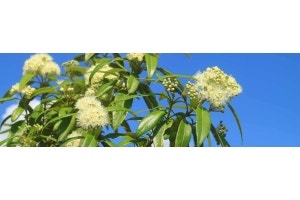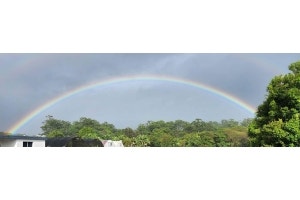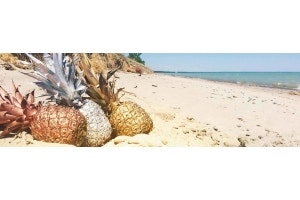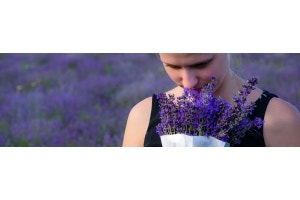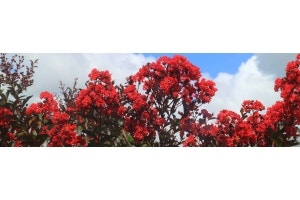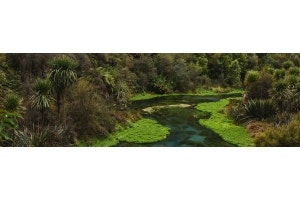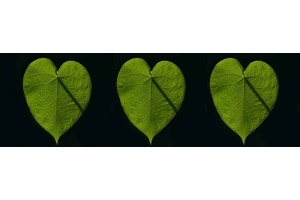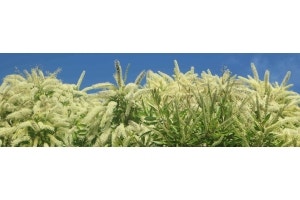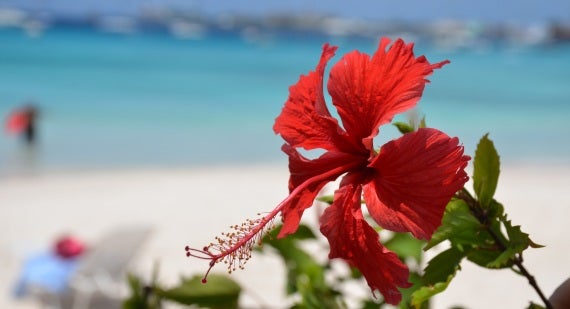
We do like to be beside the seaside
Our beautiful beaches are a playground for all of us, whether we’re swimming and surfing, building sandcastles with the bubs, or taking a stroll. Living by the coast is relaxing and energising, but can be hard on our garden plants.
The wind dries out their foliage and stunts their growth. There’s often not much shade. Salt spray coats the plants’ leaves, preventing them transpiring easily, and seeps into the soil. Soils are often sandy, dry and very free-draining, as well as salty.So what can we grow at the seaside that will thrive and look good in these harsh conditions?
Lifesaving plants for coastal gardens
If you have a dream ocean view, but a nightmare garden, choosing the right plants can help you to rescue it. We've got a whole category of Coastal Plants to help you choose; and they almost all have attributes in common.
Good plants for coastal locations have:
- silver-grey foliage - deflects scorching sun
- slender grass-like leaves – let the wind blow through without shredding the foliage and creating a tatty mess
- thick fleshy leaves or leathery leaves - they hold water and don’t dry out so fast
- a naturally low shape - aerodynamic in a strong breeze
Silver-grey foliage
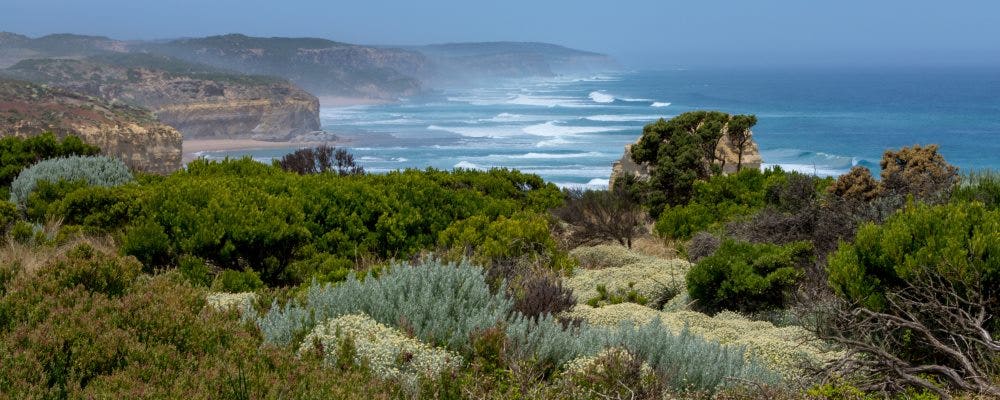 Coastal rosemary (Westringia) gives you a clue in its name that it will grow just fine by the seaside. Small grey-green leaves cope well with bright light; and the naturally-rounded form can hunker down in a strong wind. It clips nicely to topiary shapes if you like a neater look. The Mediterranean kind of rosemary is just as resilient by the sea, along with other ornamental herb plants from the region, like thyme, oregano, and sage.Native saltbush (Rhagodia) grows tall and handsome in a sheltered location; faced with sea breezes it hugs the ground - even more so if you choose the dwarf form Aussie Flat Bush.
image: Gerard.
Coastal rosemary (Westringia) gives you a clue in its name that it will grow just fine by the seaside. Small grey-green leaves cope well with bright light; and the naturally-rounded form can hunker down in a strong wind. It clips nicely to topiary shapes if you like a neater look. The Mediterranean kind of rosemary is just as resilient by the sea, along with other ornamental herb plants from the region, like thyme, oregano, and sage.Native saltbush (Rhagodia) grows tall and handsome in a sheltered location; faced with sea breezes it hugs the ground - even more so if you choose the dwarf form Aussie Flat Bush.
image: Gerard.
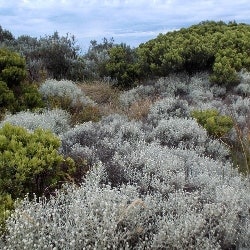 New leaves of New Zealand Christmas bush (Metrosideros) are often soft lime green, contrasting attractively with older silver-grey leaves. In summer, the plant bursts into pompoms of bright vermilion blossom. It makes an excellent windbreak and privacy screen. Fiji Fire is lower-growing, ideal for hedging; thomasii is taller and denser if you need more protection.
Gazanias are fantastically good in salty sandy soil. You can see these cheerful daisy-flowered plants growing right along the side of jetties where they are regularly drenched in surf and blasted with sea winds. We have mixed colours in season, many of which have fine silvery leaves and bright starry flowers.The ultimate silver seaside bush must be the native cushion bush, Leucophyta brownii , an amazing-looking space age shrub that clings to coastal cliffs all along the southern states.
New leaves of New Zealand Christmas bush (Metrosideros) are often soft lime green, contrasting attractively with older silver-grey leaves. In summer, the plant bursts into pompoms of bright vermilion blossom. It makes an excellent windbreak and privacy screen. Fiji Fire is lower-growing, ideal for hedging; thomasii is taller and denser if you need more protection.
Gazanias are fantastically good in salty sandy soil. You can see these cheerful daisy-flowered plants growing right along the side of jetties where they are regularly drenched in surf and blasted with sea winds. We have mixed colours in season, many of which have fine silvery leaves and bright starry flowers.The ultimate silver seaside bush must be the native cushion bush, Leucophyta brownii , an amazing-looking space age shrub that clings to coastal cliffs all along the southern states.
Grassy leaves
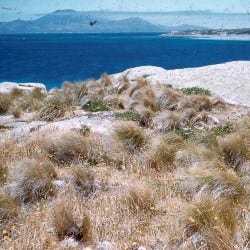
Grasses grow great at the coast; those strong winds blow right through the fine leaves. Many grasses are used for dune erosion control, which means they’ll hang on in slippery, free-draining, dry soils.
Mat rushes (Lomandra) are well known for their soil-holding capabilities, and they are tough as an old Akubra.Similarly rugged are the native Poa or tussock grasses - very fine of leaf, and sometimes silvery or blue in colour, they are often recommended by local authorities in their planting lists.image: Mary Gillham archive.
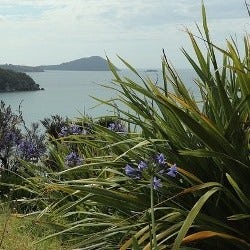 The lovely and hardy blue flax lilies (Dianella) double in height in full flower, with slender stems of dainty blue starry blooms. In other months their slender foliage looks fresh and elegant. Pair them with the New Zealand flax (Phormium), an impressively-sized fountain of wide glossy leaves, often dark or richly coloured.Try our native club rush (Ficinia nodosa) too - usually found on moist creek banks, it will grow in pure sand in the dunes alongside a beach.
You might not think of Geraldton waxflowers (Chamelaucium) as grass-like, but those needle-like leaves cope with hot sun and drying winds, and many waxflowers grow in very sandy soil in the wild. Taller bushes can act as a windbreak for a garden, sheltering more vulnerable plants.
The lovely and hardy blue flax lilies (Dianella) double in height in full flower, with slender stems of dainty blue starry blooms. In other months their slender foliage looks fresh and elegant. Pair them with the New Zealand flax (Phormium), an impressively-sized fountain of wide glossy leaves, often dark or richly coloured.Try our native club rush (Ficinia nodosa) too - usually found on moist creek banks, it will grow in pure sand in the dunes alongside a beach.
You might not think of Geraldton waxflowers (Chamelaucium) as grass-like, but those needle-like leaves cope with hot sun and drying winds, and many waxflowers grow in very sandy soil in the wild. Taller bushes can act as a windbreak for a garden, sheltering more vulnerable plants.
Thick leaves
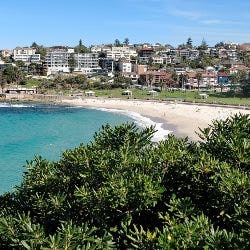
Many banksias enjoy growing at the coast - the free-draining sandy soil and milder climate suits them well.
Coastal banksia (Banksia integrifolia) lets you know by its name that it’s happy at the coast. It may get to 20m, but most are much shorter. The leathery leaves are silver-grey underneath, very pretty when the breeze blows. Primrose yellow flowers appear in late summer through to winter.Saw banksia (Banksia serrata) needs good drainage, making it well worth a try. It may only reach 2m, it may romp away to 12m. Whatever height you let it get to, the zigzag leaves and chubby cream-yellow flowers look good from summer to winter.
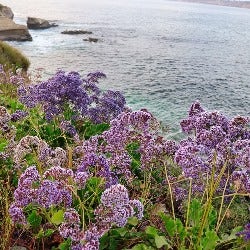 Aloes make great coastal plants - their thick leaves withstand salty winds, and their long roots anchor into sandy soils and search out fresh water.
Often seen on a Mediterranean cliffside, oleanders are tough resilient plants that put up with long dry spells, poor soils, and harsh conditions. Given a little kindness they bloom generously and lengthily in garden situations. Our dwarf variety is ideal for a windy site too.
Sea lavender (Limonium perezii) is - surprise surprise! - very happy in a beachfront garden, where its attractive leathery leaves turn red in cold weather, and its big purple-blue flowerheads will last for ages. Try other kinds of paper-flowered plants like Rhodanthe, the native paper daisy and pink and white thrift (Armeria maritima).
Aloes make great coastal plants - their thick leaves withstand salty winds, and their long roots anchor into sandy soils and search out fresh water.
Often seen on a Mediterranean cliffside, oleanders are tough resilient plants that put up with long dry spells, poor soils, and harsh conditions. Given a little kindness they bloom generously and lengthily in garden situations. Our dwarf variety is ideal for a windy site too.
Sea lavender (Limonium perezii) is - surprise surprise! - very happy in a beachfront garden, where its attractive leathery leaves turn red in cold weather, and its big purple-blue flowerheads will last for ages. Try other kinds of paper-flowered plants like Rhodanthe, the native paper daisy and pink and white thrift (Armeria maritima).
Low-growing plants
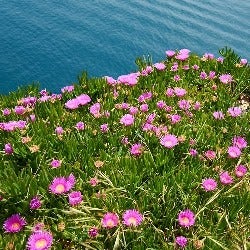
Low growing groundcover plants are ideal for seafront locations. They don’t mind strong winds, and cover soil with a living mulch, to limit water evaporation and topsoil drift.
Queen of all is probably the native Carpobrotus, affectionally known as pigface, whose vivid magenta flowers dot the dunes and appear impervious to sand, salt, and sea breezes.Its other common names, sea fig and beach bananas, shows its value as bushtucker (and treatment for scurvy!)Similar juicy-leaved ground-hugging succulents include Delosperma and Mesembryanthemum, usually called ice plants for the tiny crystals that decorate their leaves.
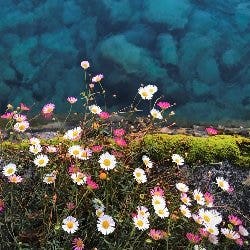 Woolly grevillea (Grevillea lanigera) has leaves unlike many other grevilleas. Tiny, chubby, and covered in tiny silvery hairs, they keep the plant fresh in dry situations and warm in cold temperatures. 'Mt Tamboritha' is low-growing, far-spreading, with dainty nectar-rich pink flowers through the year that birds and bees will love.
Even the smallest outdoor space can find room for the cut leaf daisy (Brachyscome). It’s dainty-looking, with cute little lilac flowers, and it’s sturdy too. Cupheas, with their low spreading stems, can weather a storm and bounce back to fill the garden with butterfly-attracting blooms. Equally resilient and free-flowering, is the pretty white and pink seaside daisy, Erigeron.
For humid and subtropical coasts, coastal boobialla (Myoporum ellipticum) is ideal. With tiny fleshy leaves, and little white flowers, this plant even grows in tidal wetlands - so for wetter soils it’s a great solution.
Woolly grevillea (Grevillea lanigera) has leaves unlike many other grevilleas. Tiny, chubby, and covered in tiny silvery hairs, they keep the plant fresh in dry situations and warm in cold temperatures. 'Mt Tamboritha' is low-growing, far-spreading, with dainty nectar-rich pink flowers through the year that birds and bees will love.
Even the smallest outdoor space can find room for the cut leaf daisy (Brachyscome). It’s dainty-looking, with cute little lilac flowers, and it’s sturdy too. Cupheas, with their low spreading stems, can weather a storm and bounce back to fill the garden with butterfly-attracting blooms. Equally resilient and free-flowering, is the pretty white and pink seaside daisy, Erigeron.
For humid and subtropical coasts, coastal boobialla (Myoporum ellipticum) is ideal. With tiny fleshy leaves, and little white flowers, this plant even grows in tidal wetlands - so for wetter soils it’s a great solution.
All Purpose Plants
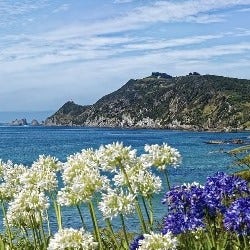
For steep slopes and exposed places you can't go past agapanthus; they'll bind together a bank and need almost no care. Choose sterile named cultivars that won't self-seed if you're in a bushland area. Their jumbo-sized lookalike, the native crinum, also doesn't mind a sandy soil. In fact it doesn't appear to mind anything much, and is very resilient and adaptable providing it has access to regular water.
Whether you’re after rockery groundcover, feature trees, or tall screening plants, Juniper is your answer. Tall slender Spartan makes a deep green privacy screen; slow-growing silver-blue Pyramidalis keeps a neat shape and a small height; and the blue-green lowgrowing shore juniper will cascade happily over a rockery or retaining bank.See our Coastal Garden Plants category to buy plants for your coastal garden PS If you're at the beach, remember that Aussie Lifesavers rescue 35 people a day around our coasts. Stay safe out there! #swimbetweentheflags
























